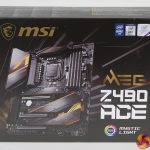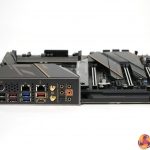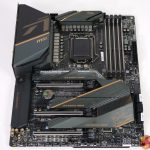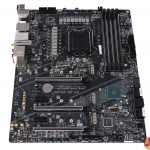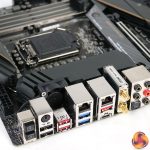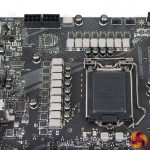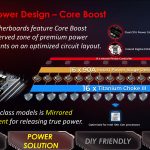The package contains almost nothing in the way of extras. You get a user guide, four SATA cables, the Wi-Fi antennae and a couple of cable extensions for functions such as RGB. The I/O shield is attached to the board so you don’t even have that familiar piece of tinware rattling around the box and while it is fair to say you get everything you need, it is also fair to say the package for this £400 motherboard does not feel generous. Four SATA cables MSI, for a board with six connectors?
The MSI MEG Z490 Ace looks stylish and understated but it is only when you strip the board down that you realise just how much hardware has been added. Naturally you get coolers on the VRMs, although we are sad to report they are big chunky aluminium things, rather than finned units. In addition there are individual heatsinks on the three M.2 slots, a substantial I/O shroud and a curious partial backplate that MSI calls a Chest Plate.
Once you have removed all those bits and pieces you can see the fundamentals of the MSI MEG Z490 Ace look sound. In particular the Intersil ISL69269 VRM controller and 16x ISL99390 90A power stages with doublers plus an extra stage for the SoC look purposeful. There are no graphics connectors on the rear I/O and as a result there is no power provision for the iGPU.
16 stages of 90A sounds massive however VRMs of this level are becoming the new normal for Z490 compared to a high end Z390 which might use 12 stages each of 50A or 60A. As you will have seen in our video, it caused us some confusion that MSI includes a 40mm active fan behind the I/O shield that can run up to 12,000rpm to cool the VRMs. If the VRM cooler works correctly we consider a fan would be unnecessary. On the other hand if active cooling is required then we dislike the idea of a tiny fan spinning at a huge rate of knots.
Be sure to check out our sponsors store EKWB here
 KitGuru KitGuru.net – Tech News | Hardware News | Hardware Reviews | IOS | Mobile | Gaming | Graphics Cards
KitGuru KitGuru.net – Tech News | Hardware News | Hardware Reviews | IOS | Mobile | Gaming | Graphics Cards


